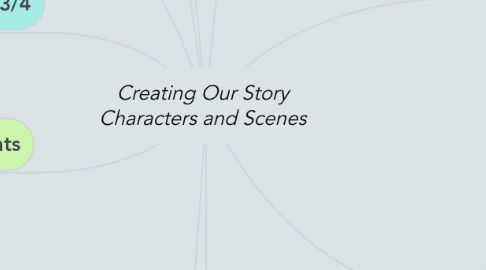
1. ACARA Year 3/4
2. Resources
2.1. An area set up with clay, paint, colouring pencils, paper, card, lego, toys and other various design materials
2.2. Stop Motion Video
2.3. Storyboard templates
2.4. Material tools (scissors, knife, string, etc)
2.5. Internet
2.6. Printer
2.7. Camera
3. Focus Questions
3.1. “How could I use these materials to create the main character in my story?”
3.2. “What do I need to consider when selecting materials?”
3.3. “What are some ideas you are having about your stop motion animations now that you have seen the materials?"
3.4. “How do we handle the tools needed to create our characters and backgrounds?”
3.5. “What progress of production have you made throughout the lesson?”
3.6. "What materials did you choose? Why?”
4. Lesson Adjustments
4.1. Give students the option of selecting images on the internet or taking pictures and printing them for their backgrounds so students with anxiety, dysgraphia or autism aren’t stressed and fall behind
4.2. Model an example of what to do before letting the students begin creating
4.3. Students with disabilities or difficulties should be sat in a certain area so they can be helped easily OR let them work as a group on the floor with an EA or the teacher
5. Assessment
5.1. In this lesson I will be formatively assessing the students progress. Specifically their progress with designing their characters and scenes and wether they need more scaffolding, more materials or more time.
5.2. The assessment will be monitored through anecdotal notes, observations and work samples
6. STEM Links
6.1. Technology
6.2. Engineering
7. Technologies Curriculum
7.1. Design and Technologies
7.1.1. Knowledge and Understanding: Recognise different types of data and explore how the same data can be represented in different ways (ACTDIK008)
7.1.2. Processes and Production Skills: Select and use materials, components, tools, equipment and techniques and use safe work practices to make designed solutions (ACTDEP016) Evaluate design ideas, processes and solutions based on criteria for success developed with guidance and including care for the environment(ACTDEP017)
8. Lesson Steps
8.1. Step 1
8.1.1. Watch Stop Motion Video
8.2. Step 2
8.2.1. Explain the lesson structure
8.3. Step 3
8.3.1. Model some examples of how the materials may be used
8.4. Step 4
8.4.1. Discuss safety and material considerations
8.5. Step 5
8.5.1. Distribute storyboards and materials
8.6. Step 6
8.6.1. Monitor class and assist students that need help
8.7. Step 7
8.7.1. Give students 10 minutes to pack away and sit on the mat. Then discuss with the students what they achieved during the lesson, what materials they chose and why.
9. Cross Curricular Links
9.1. This lesson integrates with the Arts Curriculum. Students employ visual conventions they learn in Visual Art as well as use materials, techniques and processes they have learnt in that class.
9.1.1. Use materials, techniques and processes to explore visual conventions when making artworks (ACAVAM111)
9.2. The characters and backgrounds the students are creating are based on the stories they wrote. This fits in with the English curriculum.
9.2.1. Plan, draft and publish imaginative, informative and persuasive texts demonstrating increasing control over text structures and language features and selecting print,and multimodal elements appropriate to the audience and purpose (ACELY1682)
